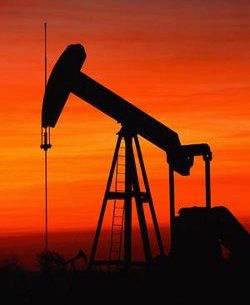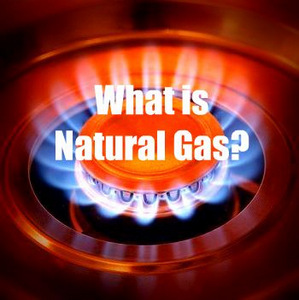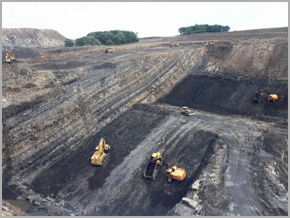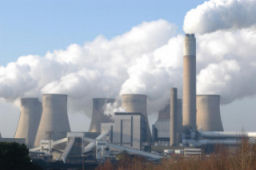Fossil Fuels Test! MCQ Quiz!

Are you interested in fossil fuels? Could you pass this quiz? Fossil fuels are produced by natural processes, such as the breakdown of buried dead organisms, containing organic molecules originating in photosynthesis, as it releases energy through combustion. Fossil fuels contain high amounts of carbon and include petroleum, coal, and natural gas. Take this quiz and learn more about fossil fuels.
- 1.
Which fossil fuel is the most efficient?
- A.
Gas
- B.
Coal
- C.
Oil
- D.
Wood
Correct Answer
B. CoalExplanation
Coal is 63% energy efficient.Rate this question:
-
- 2.
Most of the world's oil is found in sedimentary rock that is older than 200 million years old.
- A.
True
- B.
False
Correct Answer
B. FalseExplanation
it is younger than 200 million years.Rate this question:
-
- 3.
Natural gas is made of ________ which is made of carbon and hydrogen atoms.
Correct Answer
MethaneExplanation
Natural gas is primarily composed of methane, which is a molecule made up of carbon and hydrogen atoms. Methane is the simplest hydrocarbon and is the main component of natural gas. It is formed through the decomposition of organic matter in the absence of oxygen, such as in swamps, landfills, and the digestive systems of animals. Methane is a potent greenhouse gas and is also used as a fuel source for heating, cooking, and electricity generation.Rate this question:
- 4.
Where did the deep water horizon oil catastrophe happen?
- A.
Alaska
- B.
Gulf of Mexico
- C.
Hawaii
- D.
Indian ocean
Correct Answer
B. Gulf of MexicoExplanation
It happened on 20th April 2010.Rate this question:
-
- 5.
Which of these are part of the stages of coal formation?
- A.
Oxygen
- B.
Lignite
- C.
Graphite
- D.
Peat
Correct Answer(s)
B. Lignite
D. PeatExplanation
Peat and lignite are part of the stages of coal formation. Peat is the earliest stage, formed from partially decomposed plant matter in waterlogged conditions. Lignite is the next stage, formed from the compaction and heating of peat over time. Graphite, on the other hand, is not part of the stages of coal formation. It is a different mineral formed under different geological conditions. Oxygen is also not part of the stages of coal formation, as it is a chemical element and not a stage in the formation process.Rate this question:
-
- 6.
Coal supplies over half the United States electricity.
- A.
True
- B.
False
Correct Answer
A. TrueExplanation
Coal supplies over half of the United States' electricity because it is a widely available and relatively inexpensive source of energy. Coal-fired power plants are able to generate large amounts of electricity, making it a significant contributor to the country's energy mix. However, it is important to note that the use of coal for electricity generation has been declining in recent years due to concerns about its environmental impact and the increasing adoption of renewable energy sources.Rate this question:
-
- 7.
Burning fossil fuels releases ________ into the atmosphere.
Correct Answer
carbon dioxideExplanation
Burning fossil fuels, such as coal, oil, and natural gas, releases carbon dioxide into the atmosphere. This is because fossil fuels are made up of carbon, and when they are burned, the carbon combines with oxygen in the air to form carbon dioxide. Carbon dioxide is a greenhouse gas that contributes to global warming and climate change. Its release into the atmosphere is a major factor in the increase of greenhouse gas concentrations and the resulting impact on the Earth's climate.Rate this question:
- 8.
Oil wells bring up crude oil, which is then refined into more useful products. Which of these is not made by refining crude oil.
- A.
Petrol
- B.
Diesel
- C.
Kerosene
- D.
Natural gas
Correct Answer
D. Natural gasExplanation
Natural gas is not made by refining crude oil. Natural gas is a fossil fuel that is primarily composed of methane and is formed through the decomposition of organic matter over millions of years. It is typically found in underground reservoirs and is extracted through drilling wells specifically for natural gas. While crude oil can be refined to produce petrol, diesel, and kerosene, natural gas is a separate resource that is not derived from crude oil refining.Rate this question:
-
- 9.
70% of our energy comes from fossil fuels.
- A.
True
- B.
False
Correct Answer
B. FalseExplanation
It is around 90%Rate this question:
-
Quiz Review Timeline +
Our quizzes are rigorously reviewed, monitored and continuously updated by our expert board to maintain accuracy, relevance, and timeliness.
-
Current Version
-
Mar 22, 2023Quiz Edited by
ProProfs Editorial Team -
Apr 30, 2016Quiz Created by
Harvey
 Back to top
Back to top










